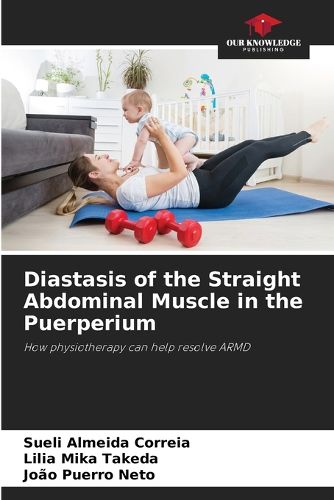Readings Newsletter
Become a Readings Member to make your shopping experience even easier.
Sign in or sign up for free!
You’re not far away from qualifying for FREE standard shipping within Australia
You’ve qualified for FREE standard shipping within Australia
The cart is loading…






Diastasis of the Abdominal Rectus Muscle or ARMD, a dysfunction that is more common in women, but also occurs in men. It is characterised by the Straight Abdominal Muscle moving away from the Alba Line. It usually occurs during pregnancy due to stretching of the muscle, but can also occur due to weakness of the abdominal muscles, overweight/obesity, performing abdominal exercises incorrectly or carrying very heavy objects. The aim of this book is to introduce readers to the role of physiotherapy in prevention during the gestational period, clarifying and guiding patients, correcting posture, breathing techniques and strengthening weakened muscle groups, including the pelvic floor muscles, thus promoting recovery of the abdominal muscles through exercises and the use of electrostimulation devices, improving muscle tone and information on maintaining this synergistic balance after recovery. This book is aimed at physiotherapy students and professionals, in order to shed more light on how and why ARMD develops in the post-natal period, which is the subject of this work. Happy reading!
$9.00 standard shipping within Australia
FREE standard shipping within Australia for orders over $100.00
Express & International shipping calculated at checkout
Diastasis of the Abdominal Rectus Muscle or ARMD, a dysfunction that is more common in women, but also occurs in men. It is characterised by the Straight Abdominal Muscle moving away from the Alba Line. It usually occurs during pregnancy due to stretching of the muscle, but can also occur due to weakness of the abdominal muscles, overweight/obesity, performing abdominal exercises incorrectly or carrying very heavy objects. The aim of this book is to introduce readers to the role of physiotherapy in prevention during the gestational period, clarifying and guiding patients, correcting posture, breathing techniques and strengthening weakened muscle groups, including the pelvic floor muscles, thus promoting recovery of the abdominal muscles through exercises and the use of electrostimulation devices, improving muscle tone and information on maintaining this synergistic balance after recovery. This book is aimed at physiotherapy students and professionals, in order to shed more light on how and why ARMD develops in the post-natal period, which is the subject of this work. Happy reading!